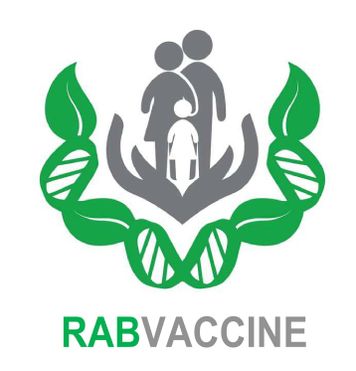The History Of Various BCGs
History Of BCG Vaccine
The initial strain of the BCG vaccine (Bacille bilié de Calmette et Guérin), which was derived from an isolation of Mycobacterium bovis at the Institut Pasteur in Lille, was first administered to humans by the oral route in 1921. BCG is the result of a long experiment carried out by two men: Albert Calmette, French doctor and biologist born in Nice, and Camille Guérin, French veterinarian and biologist born in Poitiers.
The history of BCG begins on February 7, 1908. Calmette and Guérin inoculated, on bile potato, a tuberculous bacillus of bovine origin, coming from the veterinary laboratory of Alfort - "The milk strain of Nocard" - "This remarkably stable bovine bacillus possessed exceptional virulence: inoculated under the skin of the guinea pig, it killed or tuberculized it in sixty days."
Every two weeks, then every three weeks, Calmette and Guérin transfer "the thick, fatty, shiny semen" onto new pieces of potato cut out with a cookie cutter and partially immersed in beef bile containing 5% glycerol (13 years of successive passages, or 230 in total). After several passages on bilie medium, they observe that the tuberculous bacillus of bovine origin used sees its virulence reduced until it becomes harmless.
It is the pediatrician Weill-Hallé who first takes the responsibility of applying the vaccine to a child. The first vaccination took place on June 18, 1921 by mouth on a baby born to a mother who died of tuberculosis and intended to live in a very infected environment.
The use of the vaccine became widespread in Europe during the 1920s, its effectiveness was quickly confirmed by studies among nursing students in Norway. The first tests of BCG were organized among the Indians of North America in years 30. The BCG vaccination is mandatory in France in 1950.
By the late 1940s (at a time when BCG was administered mainly percutaneously or intradermally), several studies had provided evidence of the efficacy of BCG in protecting against tuberculosis. This disease was a major concern in the aftermath of World War II and the use of BCG has subsequently been encouraged in many countries, driven, in particular, UNICEF and the Red Cross societies - Scandinavian red, then by the WHO. Extensive tests have been developed by the British Medical Research Council (BMRC) and the United States Public Health Service (USPHS) in the early 50s.
BCG was incorporated into the infant immunization program by the Expanded Program on Immunization (EPI) in 1974. BCG vaccination has since been widely used, and still is, since its administration is mandatory in 64 countries and is recommended in 118 others. In 1995, global immunization coverage was estimated at 87%. Today, around 150 million children receive a BCG vaccine each year.
It was found that the region known as RD-2, which codes for the mpt-64 gene, is present in the “primitive” strains of BCG represented by the strains :
- Brazilian strain Moreau (Assis A. 1956)
- Tokyo-172 strain (Watanabe Y. et al. 1932)
- Gothenburg (Lind A. 1971)
- Russe (Dubos R.J. et Pierce C.H. 1956)
- Birkhaug (Birkaug K. 1949)
RD-2 is absent from the secondary strains derived from the initial Pasteur strain after 1925 represented by the current secondary strains :
- Pasteur-1173 P2 (BCG Pasteur) (Gheorghiu M. et al. 1983)
- Danoise-1331 (Copenhague) (Romanus V. et al. 1993) (Jensen K.A. 1946)
- Glaxo-1077 (BCG Merieux) (Ladefoged A. et al. 1970),
- BCG Tice (Dubos R.J. and Pierce C.H. 1956)
- BCG Montréal (Frappier A. and Panisset M. 1957)
- BCG Connaught (Siebenmann C.O. and Barbara C. 1974) (Stainer D.W. and Landi S. 1986)
- BCG Phipps (BCG Park) (Aronson J.D. et Dannenberg A.M. 1935)
- BCG Prague (Osborn T.W. 1980)
History Of BCG Intravesical
In 1974, Alvaro Morales came up with the idea of making endovesical instillations of BCG to treat superficial bladder tumors. His article was published in 1976, but it was in 1984 that his results with a single cycle of BCG with six weekly endovesical instillations revealed 60% complete remissions.
The intravesical instillation of BCG as adjuvant treatment of cancer non-invasive bladder muscle is one of the few success stories of immunotherapy to the clinic, with 50%-70% response rate. Analysis of clinical data reveals statistically significant benefit for patients with signature BCG immune response prior to endovesical therapy.
The bladder tumors not invading the bladder muscle (TVNIM) represent about 80% of new cases and the majority (60%) are papillary carcinomas (pTa). The pT1 (papillary tumors invading the lamina propria) and Tis (Carcinoma in situ [CIS]) types represent respectively 30% and 10% of cases. The choice of endovesical treatment is made on the basis of the pathology of the resected tumor, making it possible to classify the patient in a risk group. Its incidence is increasing by around 4% per year, while its mortality decreases in men but remains stable in women.
BCG therapy is specifically intended for superficial bladder tumors (stages pTa, pT1 and pTis). These three stages together accounted for 70% to 80% of the 50,000 new cases of bladder tumors diagnosed in the United States in 1995. The incidence of bladder tumors was up 36% between 1950 and 2010 in the United States.
Determining the number of instillations per cycle, and their spacing was empirical. These encouraging initial results for all superficial stages (including the CIS, completely resected tumors, incompletely resected tumors) were reproduced by many teams with different regimens.
Currently there are in the world many formulations of BCG. The difference between these presentations is the viability of the injected bacillus, which characterizes its ability to multiply in vivo (CFU = colony forming unit), and the number of bacilli (which determines the dose). However, for the same type of BCG, there may be internal sustainability variations (eg., For Pastor BCG, 6x10^8 to 1x10^12 CFU). There seems to be a relationship between viability and therapeutic response.

